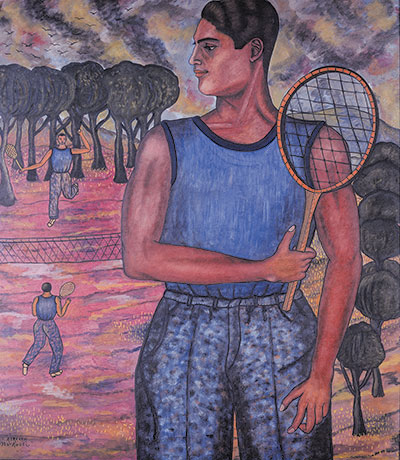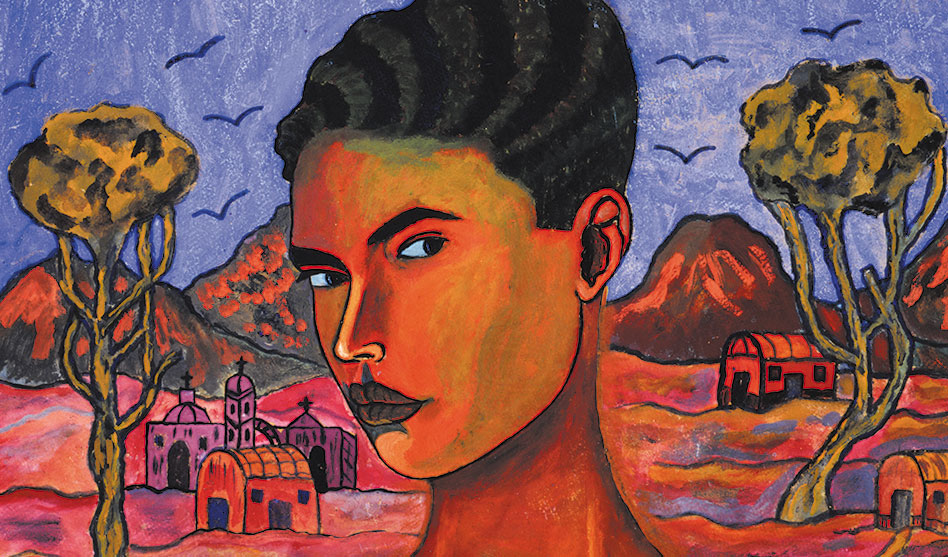Self-Portrait / Autorretrato, 1923. Abraham Ángel
DMA exhibition premieres gay artist Abraham Ángel’s surviving works
RICH LOPEZ | Staff writer
rich@dallasvoice.com
In a short time, queer artist Abraham Ángel made a lifelong impact on Mexican art. With a distinct method and a fresh take on Mexican modernism, Ángel’s works spans just three years of his life, yielding a catalog of fewer than 30 pieces before his death.
Now, Ángel is getting his moment right here in the Dallas Museum of Art’s new exhibition, Abraham Ángel: Between Wonder and Seduction. It is the first major survey of his work in almost 40 years as well as the first retrospective of his paintings in the United States.
“We are thrilled to present the first full retrospective of a magnificent artist whose life was cut tragically short just as his works were taking the Mexican art scene by surprise in the 1920s,” Dr. Agustín Arteaga, the DMA’s Eugene McDermott director said in a press release.
The show opened last Sunday and runs through Jan. 28.
The remarkable aspect of Ángel’s impact on the art world is that all his works were created while he was still a teenager. He passed at the age of 19 due to a drug overdose. During his brief time, his work captured Mexico — and distinctly Mexico City — during a time of much change. But it also captured his own gay identity.
“Despite the shortness of his career, Ángel had an immense impact on Mexico City’s artistic scene in the early 1920s. Tapping into the capital’s emerging queer subculture, Ángel’s work asserted his own identity and in doing so carved out space for future queer artists in Mexico,” Dr. Mark A. Castro, the DMA’s former Jorge Baldor curator of Latin American Art, said.

Portrait of Hugo Tilghman / Retrato de Hugo Tilghman, 1924. Abraham Ángel
Born in El Oro, Mexico, Ángel was raised by his mother and older brother Adolfo, a strict religious man. When Ángel decided to leave for art school in Mexico City, Adolfo disowned him, and the artist was left without a family. He ultimately found himself in the big city with artist Manuel Rodriguez Lozano who was his tutor and lover.
“Living in a society that was not ready for him, Ángel suffered harassment and discrimination during his lifetime, but his art embodies joy and vivacity while tracing Mexico’s transformation from rural to modernized,” Arteaga explained. “This exhibition reveals to the world the artistic qualities which had no precedent and no comparison within his times.
“Ángel’s life story continues to resonate, and his art will captivate audiences of today as it did a century ago.”
Works by Lozano are featured in the exhibition along with pieces by Ángel’s mentor, Adolfo Best Maugard, who founded the drawing universalism method which helped establish Ángel’s aesthetic. This Maugard Method was embraced by the new generation of artists of which Ángel was a part.
According to the DMA, Ángel created just 24 pieces, of which four have been lost. The exhibition features nearly all of his surviving works and will introduce the artist to a broader audience outside of Mexico.
His death in 1924 — almost 100 years ago — was sudden and a shock to his contemporaries and the larger Mexican art community. The DMA wrote in its exhibition info that “the young artist explores the intersections between national and personal identity through the natural environment, Indigenous cultures and urban life” and that his works cemented his place in his home country’s art history.
“Although the achievements of his life have sometimes been overshadowed by his untimely death, viewing Ángel’s body of work together underscores the bold and colorful imagination of this young artist, and only serves to reinforce his status as a leading figure in modern Mexican art.” Castro added.
For more information, visit DMA.org.

